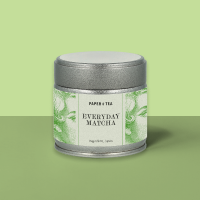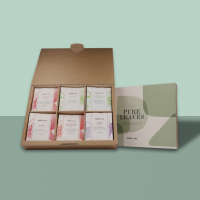Detailed Description
The cardamom plant is an herbaceous perennial that grows in tropical forests and can reach up to 3 meters in height. The attractive green flowers, which have white petals with purple streaks, produce seed pods.
Especially for green cardamom, harvesting requires a high level of expertise, as both unripe and ripe pods have the same color. Only highly skilled workers can judge the right time for harvesting. After harvesting, green cardamom is dried by the following day, either in the sun or in special drying rooms. This process halts oxidation and preserves the green color and freshness. The pods are then cleaned and sorted by size. The larger and greener the pod, the richer its seed content and, thus, its quality.
Green cardamom has a spicy-sweet flavor with a hint of heat and is often used in Asian and Arab cuisines, particularly to enhance desserts. It's also a popular ingredient in coffee and black tea: boil the pods with the coffee or tea or sprinkle the brewed drink with the ground spice. Ready-made cardamom blends are also available on the market.
Black cardamom comes from the same plant but is harvested when the pods are more mature. The key step in its processing is smoking the pods, which gives them their characteristic smoky aroma and dark color. The stronger, smoky flavor with earthy notes makes black cardamom a popular spice for stews and hearty meat dishes.
History and Background
Green cardamom originates in the Western Ghats, a mountain range in western India, where it has been used as a spice and medicinal plant for over 2000 years. In India, cardamom is known as the "Queen of Spices." In ancient Egypt, it was used for cleaning teeth, while the Romans and ancient Greeks valued it for its digestive properties and as a fragrance.
Today, the main cardamom-growing regions are India, particularly the Idukki district, and Guatemala, which is the leading exporter. Other growing countries include Sri Lanka, Indonesia, Tanzania, Madagascar, Papua New Guinea, Vietnam, Cambodia, Nepal, and Costa Rica.
The ongoing climate crisis poses a significant threat to the harvest of this prized spice, as more frequent weather changes, storms, and floods damage the trees and affect both the quality and quantity of the harvest.
Interesting Facts
- Green cardamom is one of the most expensive spices in the world, right after saffron and vanilla.
- Cardamom is used in tea blends, both herbal and pure teas.
- It is often a component of spice mixes.
- It takes about 6 kg of small pods to produce 1 kg of cardamom by hand.
- A single plant typically yields no more than 10 pods, which is about one and a half teaspoons of ground cardamom.
























